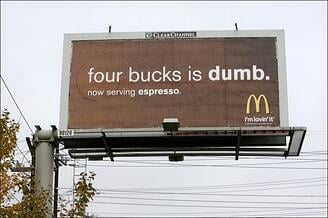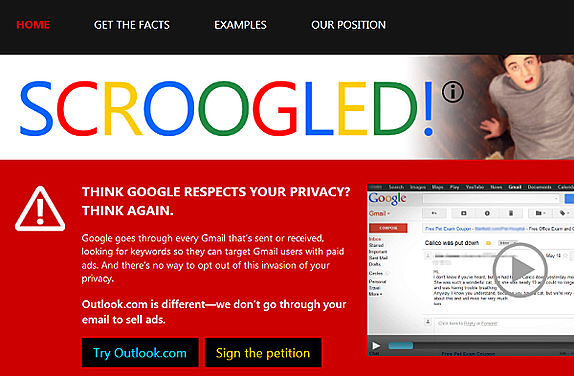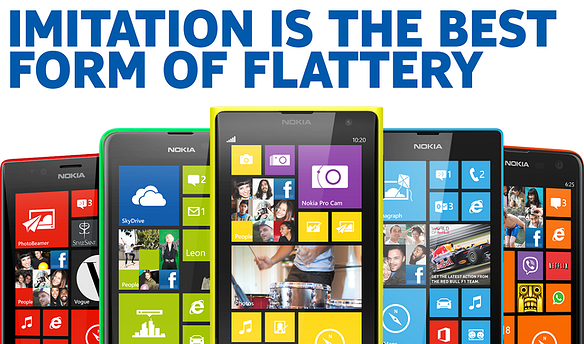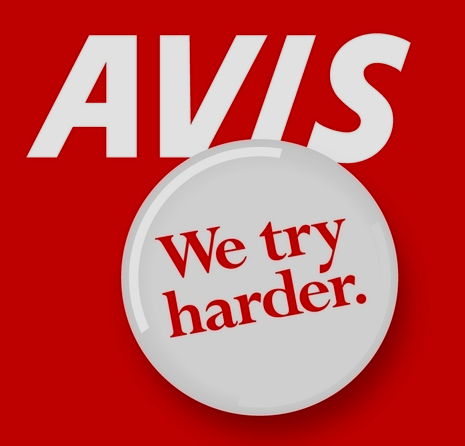 Negative advertising or “poisoning the well” is the practice of attacking a competitor or opponent to make yourself look more credible. The logic behind the practice is that if the other party's reputation is damaged, you end up looking better. While poisoning the well is de rigeur in political advertising, businesses also use it as a part of their overall advertising strategy. It’s particularly popular in the tech industry, where rivalries tend to run deep. This smear tactic technique is also frequently used by a second or third tier competitor as a way to try to tarnish the market leader’s image. Below outlines a couple google examples of negative advertising.
Negative advertising or “poisoning the well” is the practice of attacking a competitor or opponent to make yourself look more credible. The logic behind the practice is that if the other party's reputation is damaged, you end up looking better. While poisoning the well is de rigeur in political advertising, businesses also use it as a part of their overall advertising strategy. It’s particularly popular in the tech industry, where rivalries tend to run deep. This smear tactic technique is also frequently used by a second or third tier competitor as a way to try to tarnish the market leader’s image. Below outlines a couple google examples of negative advertising.
Scroogled (Courtesy of Microsoft)
In early 2013, Microsoft brought back an advertising campaign smearing their Bing search engine's largest competitor, Google. In the "Scroogled" ads, Microsoft implied that Google employees literally read every email that passed through its Gmail service. It even included a quote from Google's CEO talking about the "creepy line." Only after spending the bulk of the ad spinning Google's products did Microsoft mention its own email product, www.outlook.com.
Nokia Vs Apple
Nokia's camera phones are being advertised in reference to competing phones from Apple. Early in the ad, the company implies that their philosophy is to build phones of "quality, not just quantity." The ad continues, showing purported comparisons of pictures from the two phones indicating that the Nokia phone’s quality is seemingly always better. Given that Nokia's market share is slipping relative to Apple's in the U.S. market, this strategy could telegraph a certain degree of desperation.
1964 Daisy Girl Attack Advertisement (Peace, Little Girl)
Quite possibly the best known attack ad, 1964's Daisy advertisement featured a small child counting the petals on a daisy then transitioned to a countdown to a nuclear explosion. Interestingly, the ad poisoned the well against Barry Goldwater without ever showing his image or saying his name. However, it was a part of President Johnson's winning reelection campaign.
We Try Harder: Avis Vs. Hertz
For years, Avis used its number two position relative to Hertz as an advertising benefit, saying simply that “We Try Harder.” The unspoken meaning of the tagline was that its competitor didn’t try. While the ad was effective for years in narrowing the gap between the two companies, Avis never overtook Hertz to become the number one car rental company. When Hertz hit back with ads explaining specifically why it did more business than Avis, Hertz’s market share also grew, pointing to a key problem with poisoning the well – it doesn’t work if there’s a positive truth to counter it.
Comparative vs. Negative Advertising (1981 Pepsi Challenge)
Not all advertisements that paint competitors in an unflattering light are poisoning the well. Comparative ads that are honest, but present the product they advertise as the winner don't poison the well. Ultimately, ads that show superiority are fundamentally different than those that show derision. The 1981 Pepsi Challenge ad is an example of a comparative ad that doesn't poison any wells.





